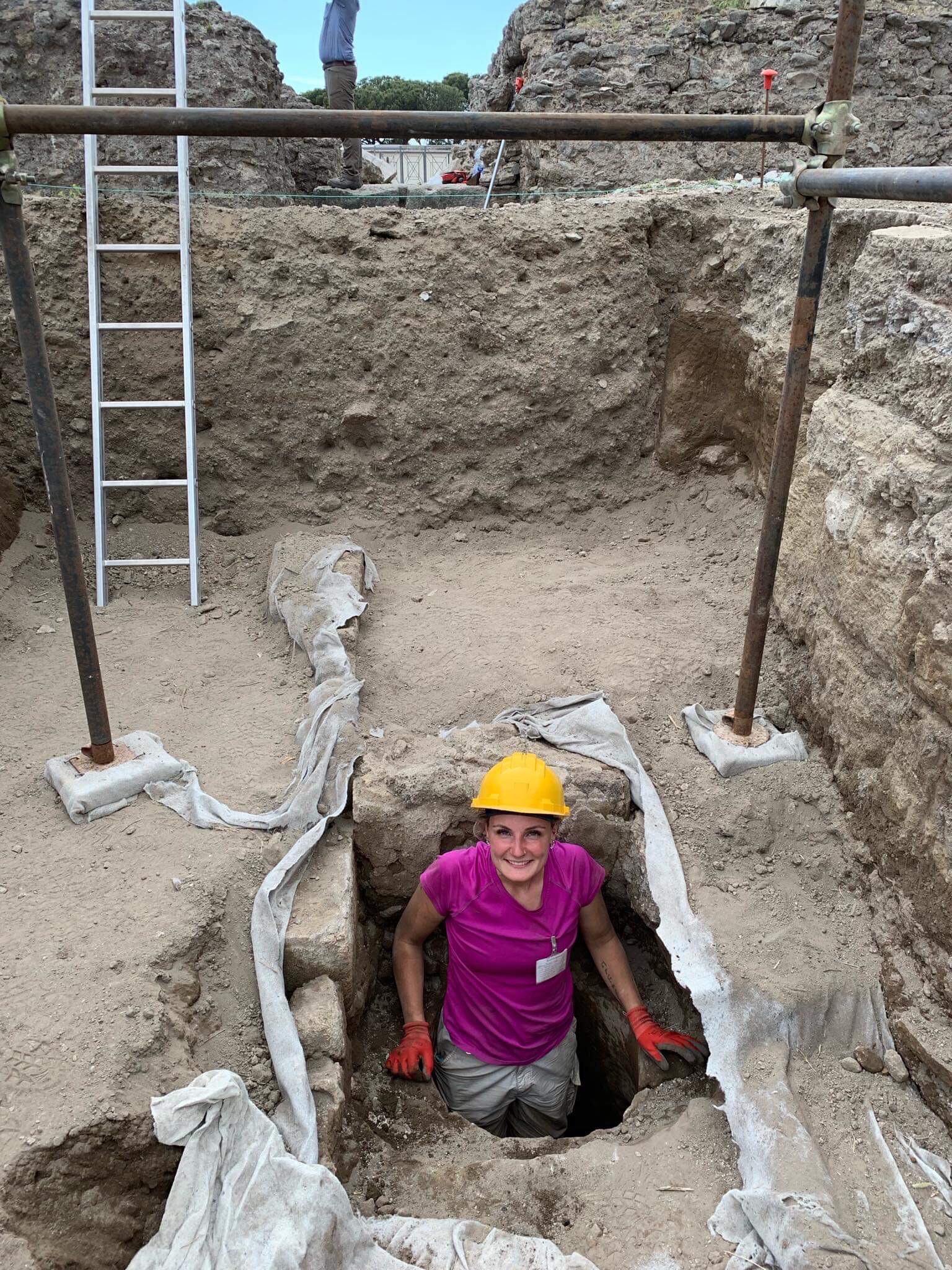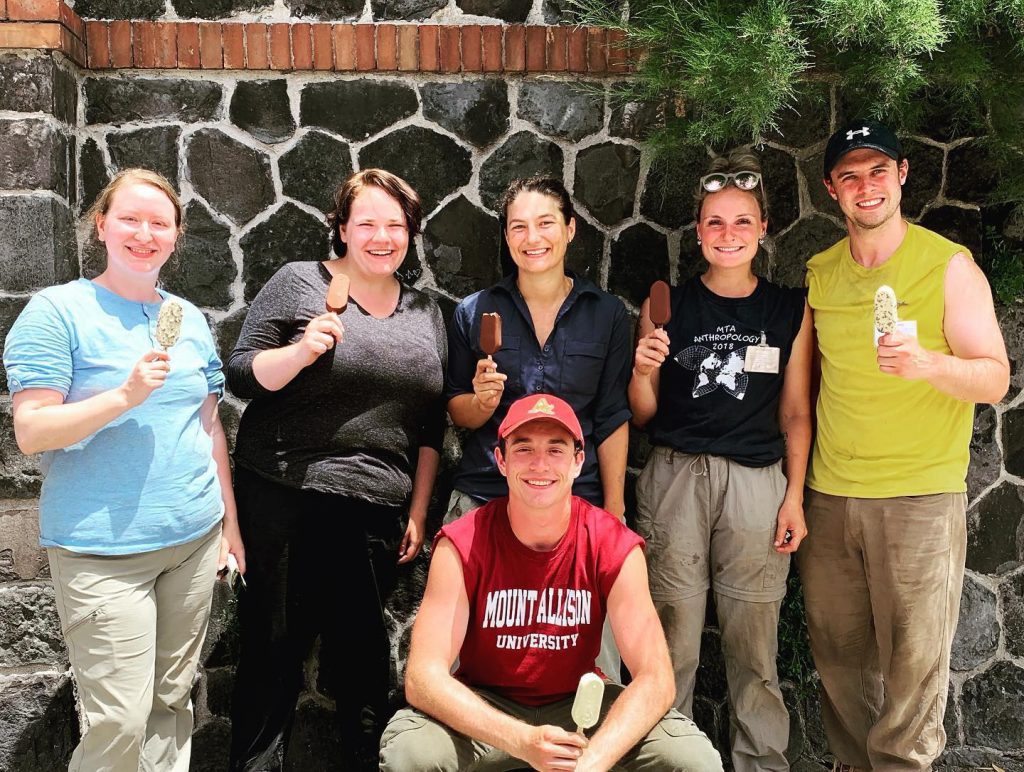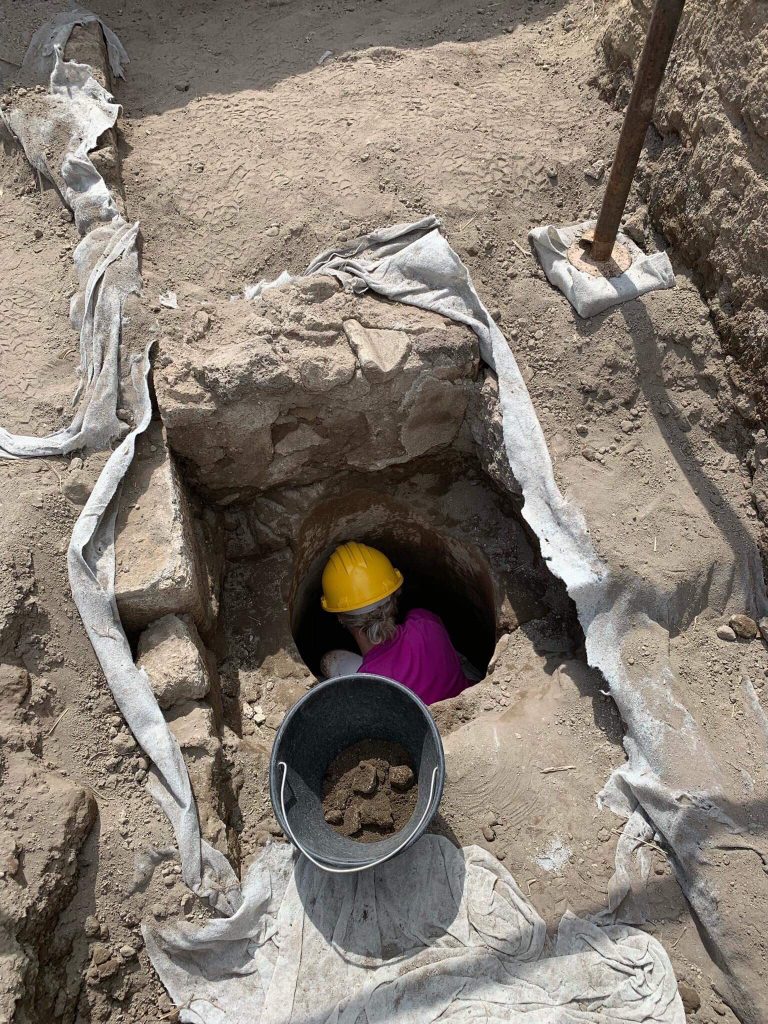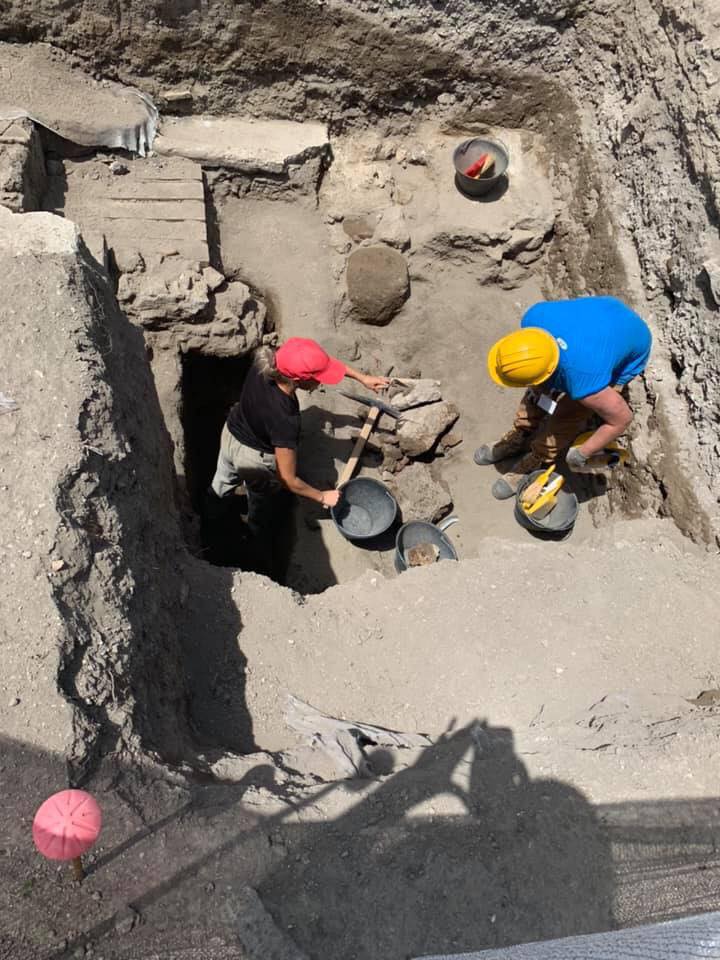June 27, 2019




Being in my second year on the VPP project, I was fortunate enough to be accepted to return as a volunteer. My duties as a volunteer included not only helping the students learn about archaeological excavation and methods, but also ensuring that I was gaining even more skills so that I could be the best teacher possible.
Archaeology is unpredictable, meaning that being fully prepared for any situation is no easy task. This year, my team started by excavating a cistern in trench IIS. The opening was very narrow, and excavating unit by unit meant that it was a slow, claustrophobic process. For the majority of the cistern, only myself and my supervisor were able to excavate due to the tricky size dimensions. As we proceeded and the cistern widened, the students in our trench were finally able to take a break from sieving and get a turn to excavate a unit of their own. While the cistern experience was short-lived, the students learned many skills – primarily the importance of careful documentation. Scientific excavation requires plenty of paperwork to ensure that our work is not only easily understood, but also credible. Along with documentation, the students learned the ins and outs of sieving, separating and bagging our finds, how to sample soil, and most importantly, how to lower a teammate into the cistern using the apparatus.
When the cistern was fully excavated, we were able to move onto a more easily populated area in the trench. This larger space meant that more of us could work together. The students were able to perfect their pick axing, shovelling, troweling, and brushing skills. Learning these physical skills was extremely important not only for the students, but also for myself – the best way to improve is to practice. When I was fortunate enough to become the supervisor of my trench, I realized just how important learning these physical skills were in combination with oral lectures from some of the incredible staff and volunteers. Without knowing the history of the site, it would not matter how good you were at troweling! Some lectures were on-site, giving the students an opportunity to actually see what they were learning about in person. Other days, we had short lectures at the hotel, where students would learn about topics such as how to perfect a harris matrix, why mosaics were important in Pompeii, the effects of Mt. Vesuvius’ eruptions, and much more. Having these lectures allowed the students to better understand the ancient city and about proper stratigraphic excavation.
While these lectures could prepare the students for a variety of topics, pottery is quite complex, and required being taught differently. Once or twice a week, the students would be sent to work in the pottery lab for the day. In the pottery lab, finds from previous days would be sorted, cleaned, weighed, and labelled among other tasks. Throughout the weeks, the students were taught about what differentiates the classes of pottery, its significance for dating the site, how to make technical drawings from sherds, and why certain finds are more important for our site than others. Those days in the lab often felt like a nice breather from the site – there was shade and a breeze, two things that were hard to come by past 10am! It is safe to say that by the end of the five weeks, our brains grew as much as our muscles did after pick axing and shovelling for hours on end. While it sometimes felt like the day would never end under the beating sun, the experience was life-changing, and flew by in the blink of an eye.
Some of my favourite memories of this year include thinking that endless SU forms would be the death of me, but finishing that huge pile was the most satisfying feeling I think I’ve ever felt. Seeing my teammates grow and find skills that they were particularly great at. Getting to know the amazingly hard-working and talented staff and volunteers better. Getting to share my biggest passion, excavation, with some incredible peers that love it as much as I do. Getting Magnum ice cream bars at lunch. Finally, I have to mention, the cheap but satisfying Bavarias shared with friends by the pool after a long day of hard work. I’m already counting down the days until VPP 2020.
Kirsten Mason is an undergraduate student at Mount Allison University studying Classics and Anthropology. She was a student on the VPP excavation in 2018 and returned in 2019 as a volunteer/trench supervisor. Kirsten hopes to pursue Classical Archaeology at a graduate level. Her interests include topics such as women and sexuality, religion, and Egyptian influences.